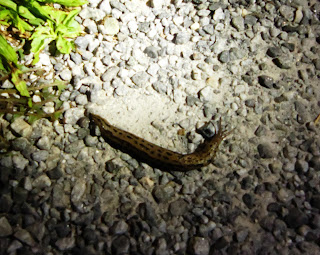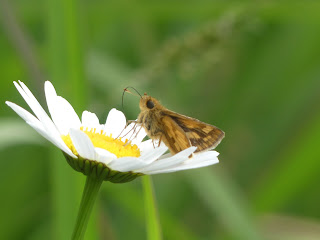New Jersey Leopards
Yesterday you heard about the "tigers" of New Jersey; today I'll talk about its "leopards".
Here's a Leopard Slug, a clearly spotted and relatively large slug. Apparently they can get up to 8" in length. Slugs and snails are both types of mollusk, and so are distantly related to animals like clams or octopuses. They eat lots of stuff, plants/fungi/invertebrates both alive and dead, and is sometimes considered an agricultural pest.
 |
| August 26, 2017 at Duke Farms |
Here's a Wood Leopard Moth, a primarily European moth considered invasive here in the US. I'm sure those spots inspired them acquiring "leopard" as part of their name. Like many successful invaders, they (as caterpillars) aren't picky eaters, willing to eat a variety of tree and bush vegetation.
 |
| June 18, 2018 at Murray Hill |
Although I don't have a picture of one, we also have Giant Leopard Moths in New Jersey. That moth isn't very closely related to the Wood Leopard Moth, and is actually classified in with the tiger moths.
Here's an Atlantic Coast Leopard Frog, which certainly acquired its name from its spots. (If you're a small arthropod, you might also be impressed with the frog's predatory side.) The leopard frogs in my area used to all be considered the very closely related Southern Leopard Frog, but subtle differences in mating calls (and probably genetics) eventually led herpetologists to recognize the ACLF as a separate species.
 |
| August 10, 2019 at Great Swamp |



Comments
Post a Comment